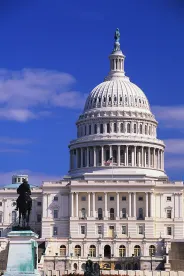As we previously reported, President Biden signed the American Rescue Plan Act (“ARPA”), a $1.9 trillion COVID-19 relief package, into law on March 11, 2021, which, among other things, mandates that employers provide 100 percent COBRA premium subsidies to eligible employees (“Assistance Eligible Individuals” or “AEIs”) and their qualified beneficiaries from April 1, 2021, through September 30, 2021 (“Subsidy Period”). ARPA also creates a series of complicated notice requirements, each with different timelines, which employers must navigate to ensure compliance.
An AEI is a former employee who has experienced a “qualifying event,” either an involuntary termination or a reduction of hours, and who is, or could have been, eligible for COBRA coverage during the Subsidy Period. The qualifying event may occur during the Subsidy Period; however, former employees who experienced earlier qualifying events are also eligible under ARPA for an extended COBRA election period. All AEIs must be given proper notice under ARPA, although the rules vary based on the time of the qualifying event. On May 18, 2021, the Internal Revenue Service (“IRS”) issued Notice 2021-31, which answers many of the questions related to how to calculate and claim the payroll tax credit as well as other implementation items. The guidance consists of 86 Q&As on the ARPA COBRA premium assistance provisions and covers topics such as who is eligible for the premium subsidy, when a termination of employment is considered involuntary for subsidy purposes, the types of coverage to which the subsidy applies, the period to which the subsidy applies, the right to make a special COBRA election, and the interaction with state mini-COBRA coverage.
To help employers navigate the complex notice requirements, the U.S. Department of Labor (“DOL”) recently issued Model Notices and guidance to facilitate the process. Although not mandatory, appropriate use of these Model Notices is considered good faith compliance by the DOL. Therefore, employers and plan administrators should use these Model Notices, when possible, to mitigate risk under COBRA’s existing civil penalty structure. Below is a summary of these notice requirements.
I. Extended Election Notices—for Qualifying Events Before April 1, 2021
Who? The Extended Election Notice must be sent to AEIs, defined as a qualified beneficiary who had a COBRA qualifying event before April 1, 2021, as a result of an involuntary termination or reduction of hours, and whose COBRA maximum coverage period has not expired as of April 1, 2021.
This group of AEIs includes individuals who (i) were eligible for but did not elect COBRA as of April 1, 2021; (ii) enrolled in COBRA coverage but discontinued it before April 1, 2021; or (iii) enrolled in COBRA as of April 1, 2021.
What? The Model COBRA Continuation Coverage Notice in Connection with Extended Election Periods, as well as the Summary of ARP Provisions and Request for AEI Treatment Form,* allows AEIs who are not currently on COBRA to elect COBRA during a special 60-day window, retroactive to April 1, 2021, and allows AEIs who are currently enrolled in COBRA or who enroll during the special window to request subsidy eligibility by using the form to request AEI status. This notice does not have to be provided to qualified beneficiaries who lost coverage due to other qualifying events.
When? This notice must be sent to all AEIs by May 31, 2021. Some employers are sending to all “potential” AEIs (i.e., anyone who terminated employment or anyone who had a reduction in hours) if the circumstances of their termination are unknown.
II. Updated ARPA General Notice—for Qualifying Events Occurring from April 1, 2021, Through September 30, 2021
Who? This General Notice must be used for all qualified beneficiaries with a qualifying event occurring during the Subsidy Period, but it could also be used for qualified beneficiaries with recent qualifying events who have not yet received their COBRA election notice.
What? The General Notice was updated to include ARPA subsidy information and other changes. The DOL’s Model ARP General Notice and COBRA Continuation Election Notice,* which must include the Summary of ARPA Provisions and Request for AEI Treatment Form, allows AEIs to elect COBRA in the normal course and request the subsidy by using the form to request AEI status. AEIs have 60 days to elect COBRA coverage for the Subsidy Period. If an employer is using its own notice form, it must be updated to reflect ARPA’s specific guidelines.
When? Use this form immediately and provide by normal deadlines for COBRA election notices.
III. Notice of Expiration—Must Be Sent 15-45 Days Before the Subsidy Ends
Who? The Notice of Expiration must be sent to AEIs whose subsidy is terminating: (i) prior to September 30, 2021, because the normal COBRA continuation maximum period is ending, or (ii) as of September 30, 2021 (the end of the Subsidy Period).
What? Employers have an obligation to notify AEIs that their subsidy is ending by sending the Notice of Expiration of Period of Premium Assistance.
When? The Notice of Expiration of Period of Premium Assistance must be sent at least 15 days, but not more than 45 days, before the subsidy ends in advance of the expiration of the AEI’s COBRA premium assistance.
*Employers/Plan Administrators must add to these forms the “Form For Switching COBRA Continuation Coverage Benefit Options,” if the employer decides to allow AEIs to elect to enroll in coverage that is different than the coverage in which the individual was enrolled at the time of the qualifying event, as permitted by ARPA.
What Employers Should Do Now
- Review new IRS guidance to properly identify all AEIs.
- Develop a plan to stay organized and keep track of deadlines.
- Coordinate with COBRA administrators.
- Timely distribute all required notices.
- Be prepared to refund or credit payments by COBRA beneficiaries that they may have made during the Subsidy Period prior to receiving notice about the COBRA ARPA subsidy.




 />i
/>i
